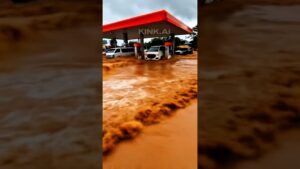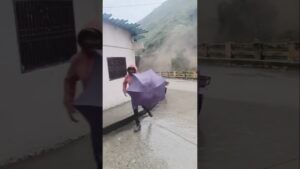
When nature gets out of control #Naturedisaster #Disaster #HillariousMoment
Natural disasters are catastrophic events that occur as a result of natural processes on Earth. These disasters often strike without warning and can cause widespread destruction, loss of life, and significant economic damage. The most common types of natural disasters include earthquakes, floods, hurricanes, tornadoes, droughts, volcanic eruptions, tsunamis, and wildfires. Each type of disaster has unique causes, impacts, and responses, but all highlight the vulnerability of human societies to the forces of nature.
Earthquakes are sudden tremors caused by the movement of tectonic plates beneath the Earth’s surface. They can destroy buildings, roads, and other infrastructure in seconds. Areas near fault lines, such as California in the United States and Japan, are especially prone to earthquakes. Sometimes, underwater earthquakes can trigger tsunamis—massive sea waves that flood coastal regions, causing additional damage and loss of life.
Floods occur when water overflows onto normally dry land, often due to heavy rainfall, snowmelt, or dam failures. Flooding can devastate agricultural land, displace communities, and lead to waterborne diseases. In recent years, climate change has increased the intensity and frequency of extreme rainfall, making floods more common and severe in many parts of the world.
Hurricanes, also known as typhoons or cyclones depending on the region, are powerful tropical storms characterized by high winds and heavy rain. These storms form over warm ocean waters and can cause severe wind damage, flooding, and storm surges when they reach land. The destruction left behind can take years to repair, and coastal regions are especially vulnerable to their impact.
Droughts are prolonged periods of below-average rainfall that lead to water shortages. They can have devastating effects on agriculture, livestock, and local economies, and often contribute to famine in affected areas. Droughts also increase the risk of wildfires, which can burn thousands of acres of forest and destroy homes, wildlife, and air quality.
Volcanic eruptions occur when molten rock, ash, and gases escape from a volcano. These eruptions can bury entire towns, contaminate water supplies, and affect air travel and climate. Though not as frequent as other disasters, volcanic eruptions can be extremely destructive, especially in densely populated regions.
Wildfires, often sparked by lightning or human activity, are uncontrolled fires that rapidly spread across forests and grasslands. Drought, high temperatures, and strong winds can fuel their spread. Wildfires destroy habitats, endanger wildlife, and pose serious health risks due to smoke inhalation.
Natural disasters remind us of the power and unpredictability of the natural world. While science and technology have improved our ability to forecast and respond to these events, complete prevention is often impossible. Preparedness, education, and sustainable development practices are essential to minimizing their impact. As global climate patterns continue to shift, understanding and adapting to natural disasters will be more important than ever for communities around the world.
#NaturalDisaster
#DisasterRelief
#StaySafe
#EmergencyAlert
#ClimateCrisis
#PrayFor[Location]
#BreakingNews
#Earthquake
#FloodAlert
#HurricaneSeason
#TsunamiWarning
#VolcanoEruption
source




The nature is so scary 😰
😮😮
Thunder is one of god wepon